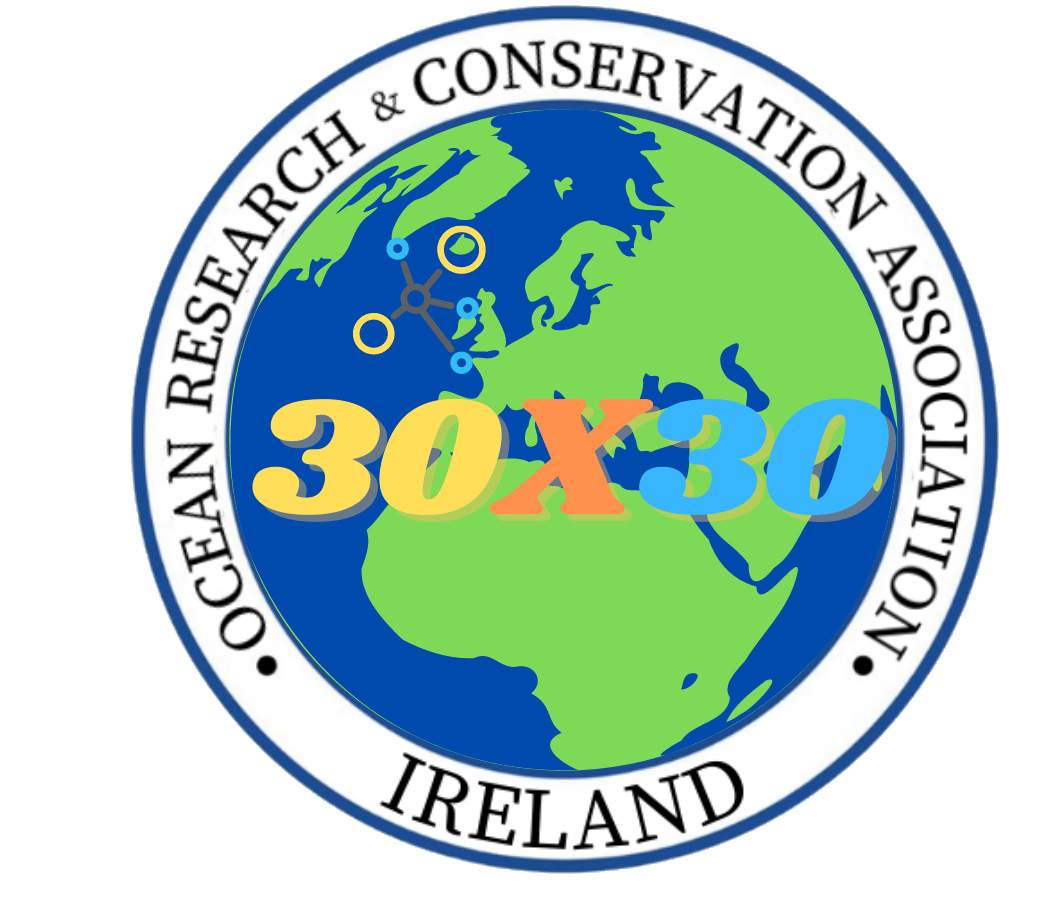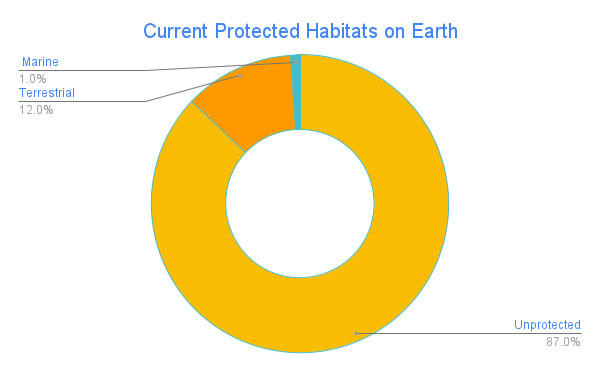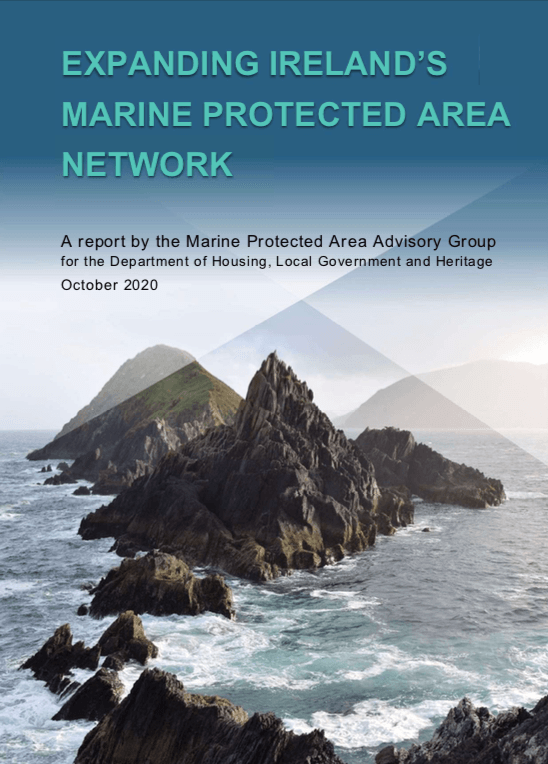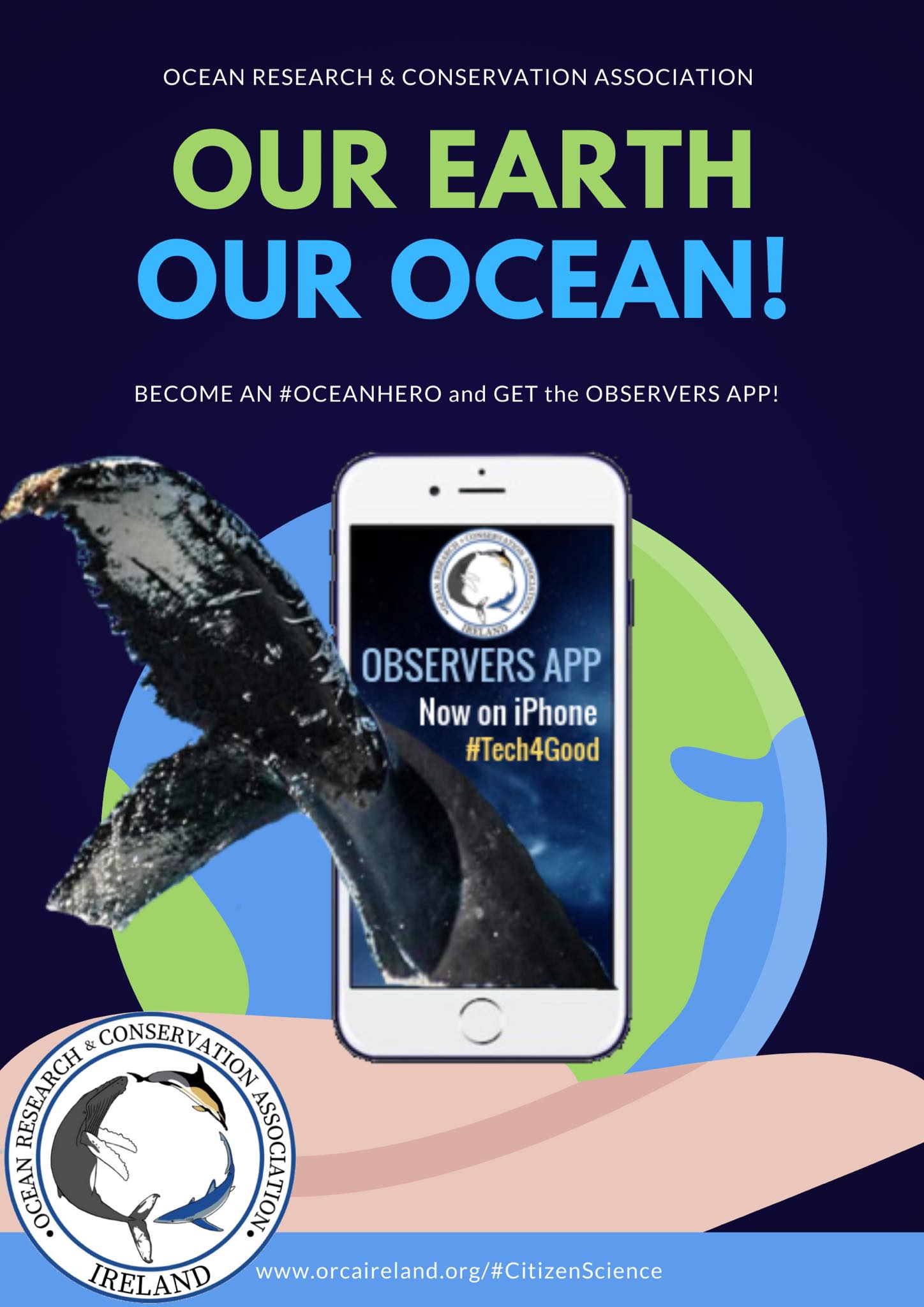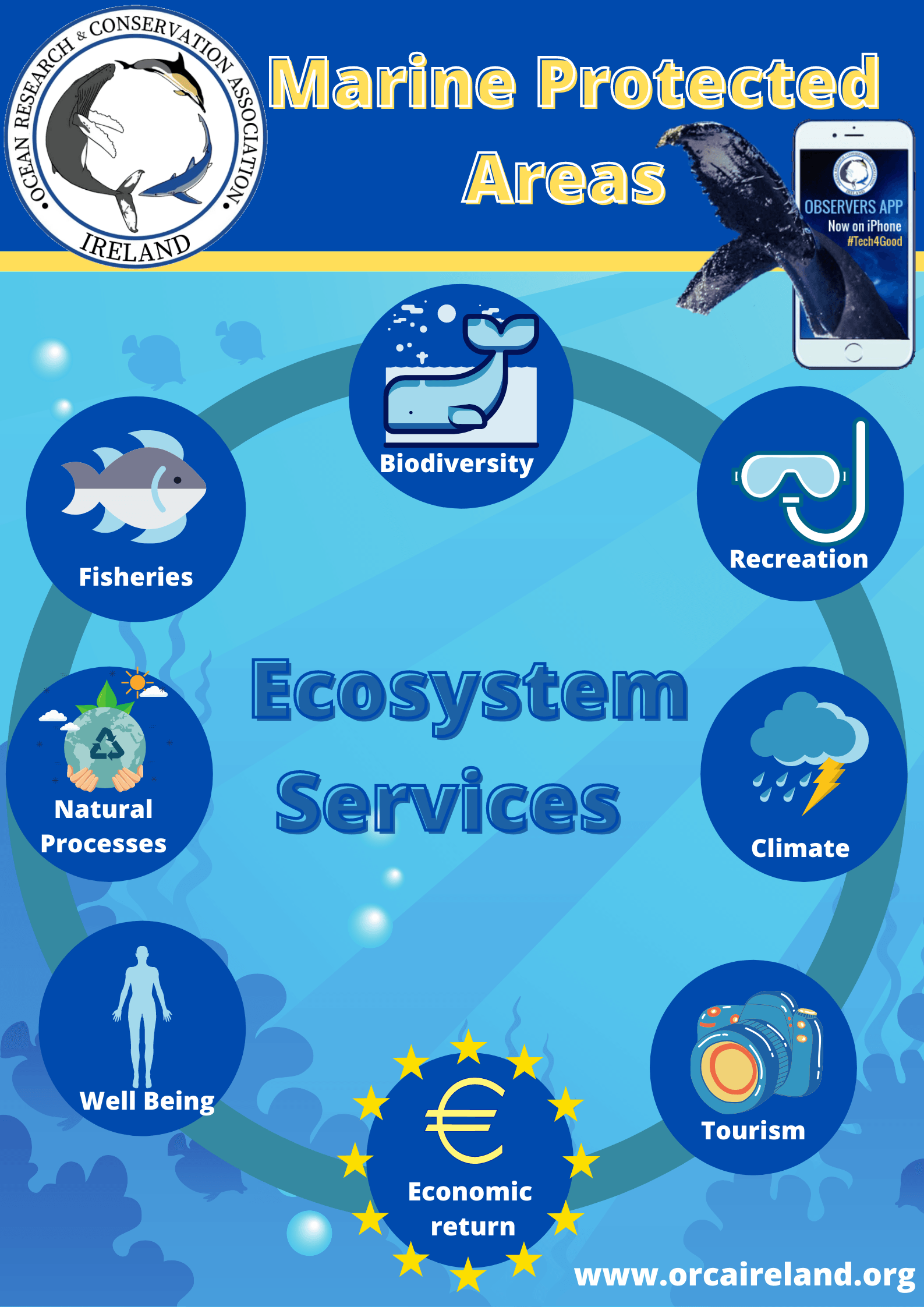#Protect30X30
Marine Protected Areas (MPAs)
WHY MPAs?
We live on a blue planet, with the ocean constituting over 90% of the habitable space on Earth. In Ireland, our marine territory is ten times the size of the landmass. Our ocean holds a higher phylogenetic diversity than terrestrial our habitats. According to UNESCO, without significant changes being made to the way we sustainably manage our marine ecosystems, by the year 2100, more than half of the world's marine species are predicted to become on the brink of extinction!
Marine Protected Areas (MPAs) are geographically defined maritime areas essential to conserve the biodiversity of the oceans and to maintain productivity, especially of fish stocks. MPAs can support sustainable economic activity by conserving biological diversity, reducing the effects of climate change and ocean acidification, by ensuring that marine ecosystems, and ultimately human life are maintained.
In January 2021, the
Department of Housing, Local Government and Heritage published a new Marine Policy on "Expanding Ireland's Marine Protected Areas Network". Currently, only less than
2.33% of Irish waters are designated as protected habitats, e.g. as
Special Areas of Conservation (SAC), which covers an area of
9,944km2 marine and coastal area, compared to a Ireland's total marine and coastal territory of 426,442km2
. The total area that has been assessed to date is only
86km2.
LETS GO BEYONG A PAPER EXERCISE AND ENHANCE MARINE MEGAFAUNA BIODIVERSITY MONITORING WITH CITIZEN SCIENCE!
The National Biodiversity Action Plan 2017- 2021 Objective 5 focuses on conserving and restoring biodiversity and ecosystems in the marine environment. This includes achieving:
- Good Ecological Status of Irish Marine Waters
- Maintaining and Restoring Fish Stock Levels to obtain Maximum Sustainable Yield (MSY).
Prolonged periods of over-fishing have had a severe impact on the biodiversity of commercial fisheries, and recently only very limited catches of depleted species such as the Atlantic cod (Gadus morhua), haddock (Melanogrammus aeglefinus) and Atlantic herring (Clupea harengus) have been permitted. In order to protect marine megafauna, we need to protect their important habitats and the prey on which they depend.
OUR OCEANS OUR EARTH!
People that live or work by the sea can provide invaluable knowledge on local areas which may be considered as important habitat to protect marine wildlife by logging records of encounters in the Observers App, ORCA Ireland's free Citizen Science pocket-conservation-tool for marine megafauna.
MAPPING MARINE MEGAFAUNA!
When you log a record of a marine mammal, shark or seabird, you will help to map that marine wildlife, including documenting trends in its distribution and its behaviours to help us to better understand how it is using a particular habitat. Is it feeding, resting, with a calf or a pup? This is all super helpful information to protect marine megafauna and their critical habitats.
HOW DO MPA's WORK?
Effective MPA's require strong governance based on robust data, while promoting a sense of stewardship that demonstrates the social, economic and environmental benefits for local communities. This involves the introduction of regulations to safeguard biodiversity and natural resources, engaging people in planning and sharing the benefits of our oceans.New Paragraph
ECOSYSTEM SERVICES:
Ecosystem services are the benefits that people derive from ecosystems , which include cleansing, recycling and renewal, the maintenance of biodiversity, and the production of goods such as seafood, timber, fuels, natural fibre and many pharmaceuticals. Ireland's marine habitat provides a range of eco-system services from fishing as a source of food, to recreational activities such as diving, snorkelling, kayaking, whale watching, sea angling, kite-surfing, and much more.

